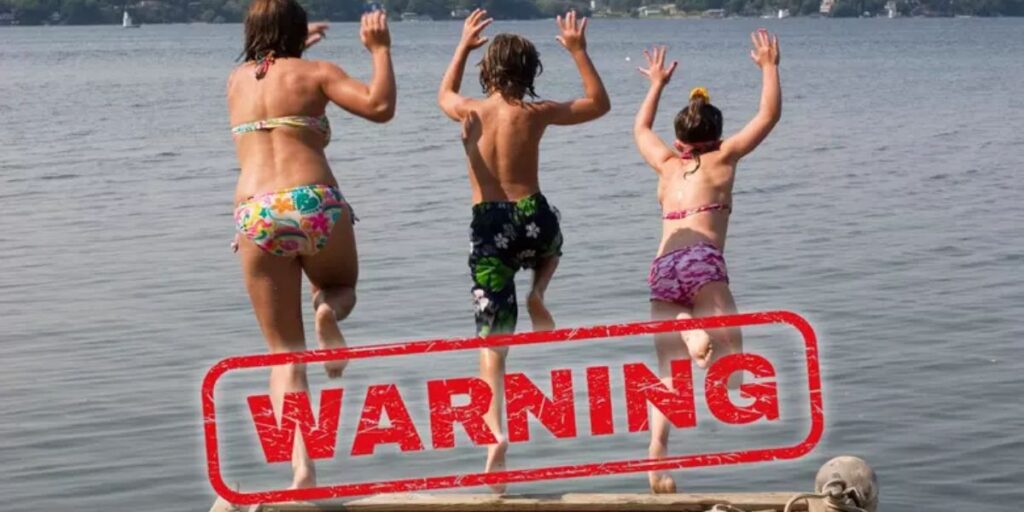As summer approaches and families in Indiana head to pools, lakes, and water parks, parents must consider an often-overlooked safety factor: swimsuit color. While parents focus on flotation devices and lifeguard supervision, studies show that the color of a child’s swimsuit can significantly impact their visibility in the water, especially in emergency situations.
Why Swimsuit Color Matters for Safety
Drowning remains one of the leading causes of accidental death in children, with the Centers for Disease Control and Prevention (CDC) reporting that drowning accounts for nearly 4,000 deaths in the U.S. each year. One crucial element in drowning prevention is the ability to quickly locate a struggling child in the water. Some colors blend too easily into the environment, making it difficult for lifeguards or parents to spot a child in distress.
Unlike controlled swimming pools with clear water, Indiana’s lakes, rivers, and ponds often have murky water with limited visibility. This makes the choice of swimsuit color even more critical for safety.
The Most Dangerous Swimsuit Colors
Recent studies conducted by safety experts, including a 2021 study by Alive Solutions Inc., tested different swimsuit colors in various water conditions to determine their visibility. The results indicate that the following swimsuit colors pose the most risk:
1. Blue Swimsuits
Blue swimsuits—whether light blue, navy, or teal—are among the most dangerous for children. These colors blend into the natural water, making it nearly impossible to distinguish a child from the surroundings. In pools with blue-tinted water, a child wearing a blue swimsuit can appear almost invisible beneath the surface.
2. Green Swimsuits
Similar to blue, green swimsuits merge with the natural hues of lakes and ponds. Many Indiana swimming locations have algae or plant life, making green an unsafe choice. Even in pools, green suits can be difficult to see due to light refraction.
3. White or Light Gray Swimsuits

White and light gray swimsuits reflect the colors of their surroundings, which can make children hard to spot both at the surface and underwater. Additionally, these colors tend to appear translucent when wet, which further reduces their contrast in the water.
4. Black or Dark-Colored Swimsuits
While black might seem like an obvious choice for visibility, it can actually have the opposite effect in certain conditions. In dark or murky waters, black swimsuits can make a child virtually disappear, creating a major hazard.
5. Pastel Colors
Soft pastel colors like baby pink, lavender, and light yellow can easily become washed out in bright sunlight and chlorinated pool water. These hues lack the high contrast needed for optimal visibility.
Best Swimsuit Colors for Safety
If some colors are dangerous, which ones should parents choose to keep their kids safe? Experts recommend opting for bright, high-contrast colors that stand out in different water conditions. Here are the best options:
1. Neon Orange
Neon orange is one of the most visible colors in both pools and natural bodies of water. It contrasts well against blue, green, and brown backgrounds, making it easier to spot a child quickly.
2. Neon Yellow
Another highly visible color, neon yellow, is excellent for murky or dark water. It stands out clearly in lakes and ponds, where water may be discolored due to sediment.
3. Bright Pink
Unlike pastel pink, neon or hot pink remains highly visible in pools and lakes. It provides a strong contrast against natural water shades and ensures a child can be quickly identified.
4. Bright Red
Red is an effective choice for pool safety because it contrasts against the water’s blue hue. However, in deeper or murky waters, red can appear darker, so it’s best paired with other high-visibility safety measures.
Additional Water Safety Tips
While choosing the right swimsuit color can improve visibility, it is not a substitute for active supervision and proper water safety practices. Here are additional tips to ensure kids stay safe while swimming:
1. Always Supervise
Never rely solely on lifeguards or flotation devices. An adult should always keep an eye on children near the water, using the “touch supervision” rule for younger kids—staying within arm’s reach at all times.
2. Enforce Life Jackets in Open Water
For lakes, rivers, and ponds, children should always wear U.S. Coast Guard-approved life jackets. These can provide critical buoyancy in emergencies.
3. Teach Water Safety Early
Enroll children in swimming lessons as early as possible. Organizations like the YMCA and the American Red Cross offer programs that teach kids essential survival skills.
4. Use Pool Alarms and Barriers
If you have a backyard pool, install pool alarms, safety covers, and proper fencing to prevent accidental falls into the water.
5. Educate Children About Water Hazards
Teach kids about rip currents, deep water dangers, and the importance of swimming with a buddy. Encouraging safe swimming habits can prevent accidents.
Conclusion
In Indiana, where families enjoy various swimming spots from backyard pools to lakes and water parks, swimsuit color is a crucial yet often overlooked safety factor. Blue, green, black, white, and pastel swimsuits pose visibility risks, while neon colors like orange, yellow, and pink significantly improve a child’s visibility in the water.
By making informed choices about swimsuit colors and practicing water safety, parents can take proactive steps to reduce drowning risks and ensure a fun, safe summer for their children. Always prioritize visibility, supervision, and safety education to keep little swimmers protected.





More Stories
The Most Dangerous Swimsuit Colors for Kids in Indiana – What Parents Need to Know
The Most Dangerous Swimsuit Colors for Kids in Indiana – What Parents Need to Know
The Most Dangerous Swimsuit Colors for Kids in Indiana – What Parents Need to Know